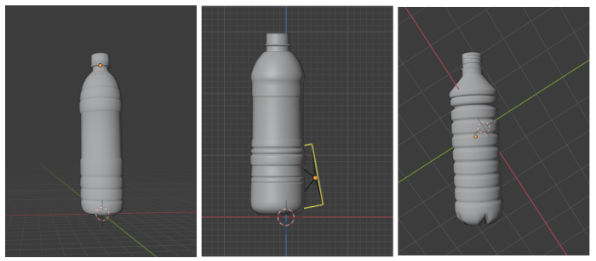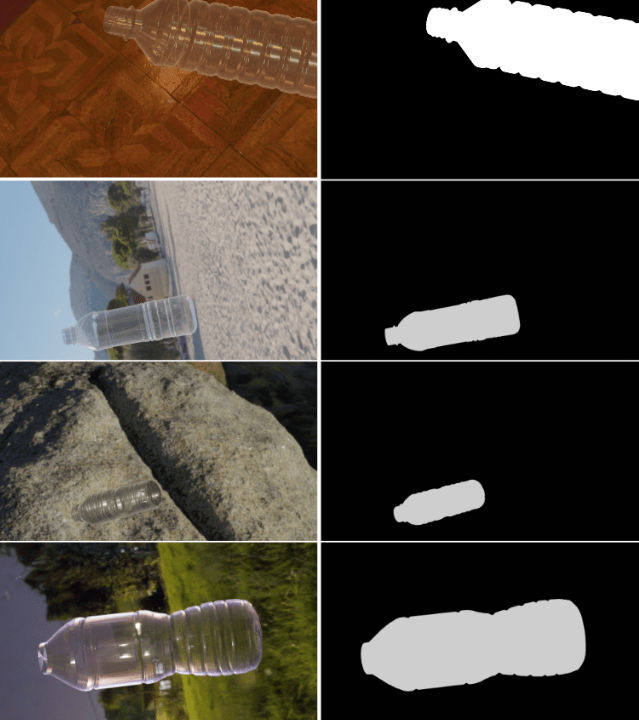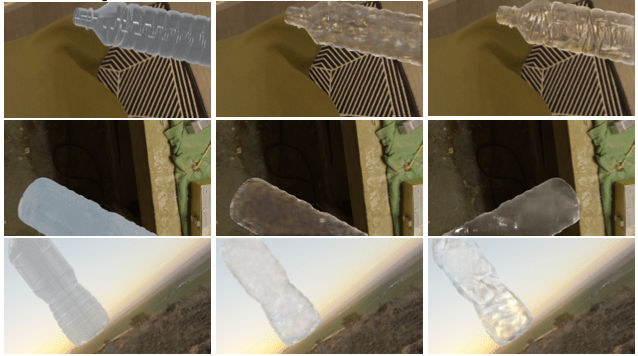The research conducted uses a technique which creates synthetic data using a general adversarial network to generate transparent objects. Transparent objects are complex, notably as they warp the backgrounds and take on their colour, in addition to relying heavily on lighting conditions for their aspect. The research carried out attempts to improve the aspect of transparent objects to produce visually compelling datasets; most significantly focused on transparent plastic bottles.
Synthetic Dataset

These images showcase 3 bottle renders
One of the most crucial aspects of this project is that the images must be in the wild, meaning that whilst the images are synthetic, they must mimic the way a transparent object looks when featured in a random scene. Because the data that Recycleye uses comes from a variety of sources, the solution must not be restricted to light conditions that are impossible to find in nature.

This series of images showcases ground truth renders and their corresponding segmentation masks.

Image samples from diverse epochs

Image samples from diverse epochs and their ground truths

Two images when the generator is an encoder-decoder and their input shown on the left

Synthetic images of transparent bottles produced
In Conclusion
Due to the conditions of the technique used not being applicable to images of transparent objects in the wild, a radically diverse approach was proposed. The technique developed aimed to produce composite images that appeared realistic to the human eye. Because the human visual system is insensitive to small deviations of how an object refracts and reflects light, this weakness was harnessed to produce composites that are visually plausible.